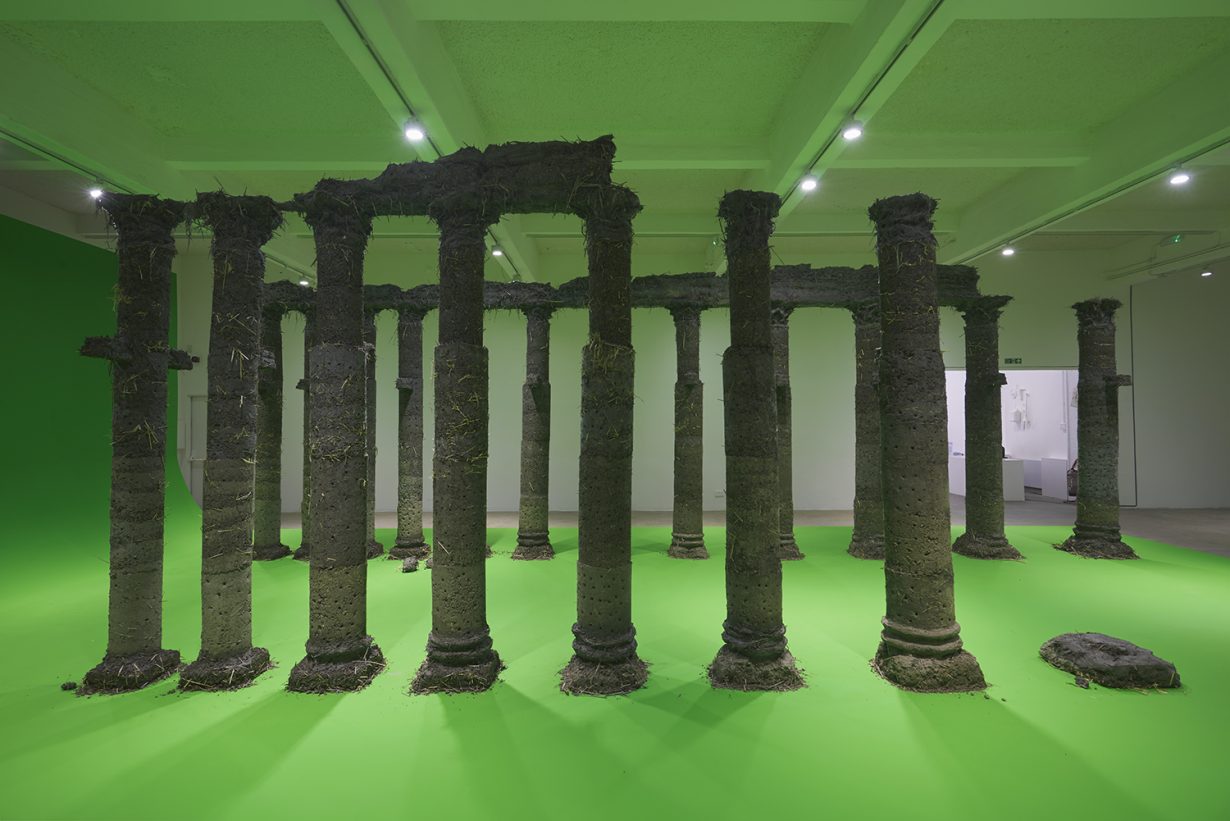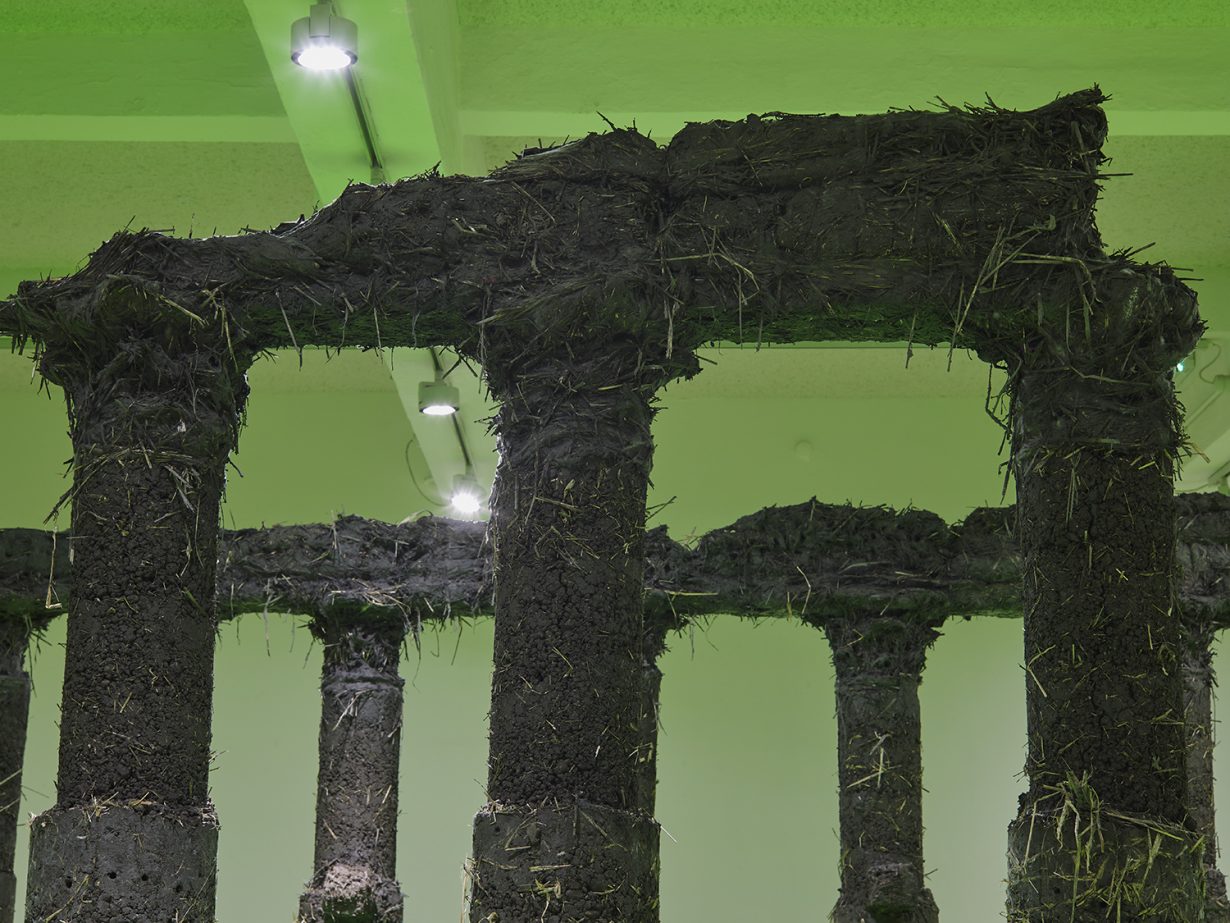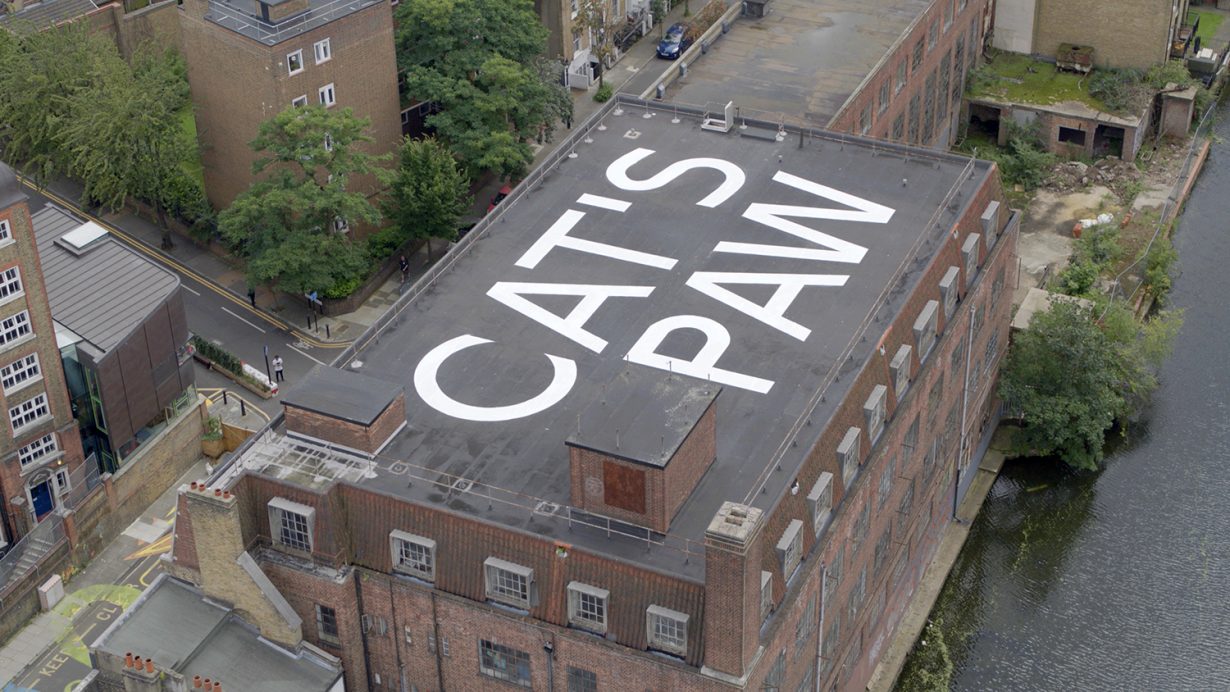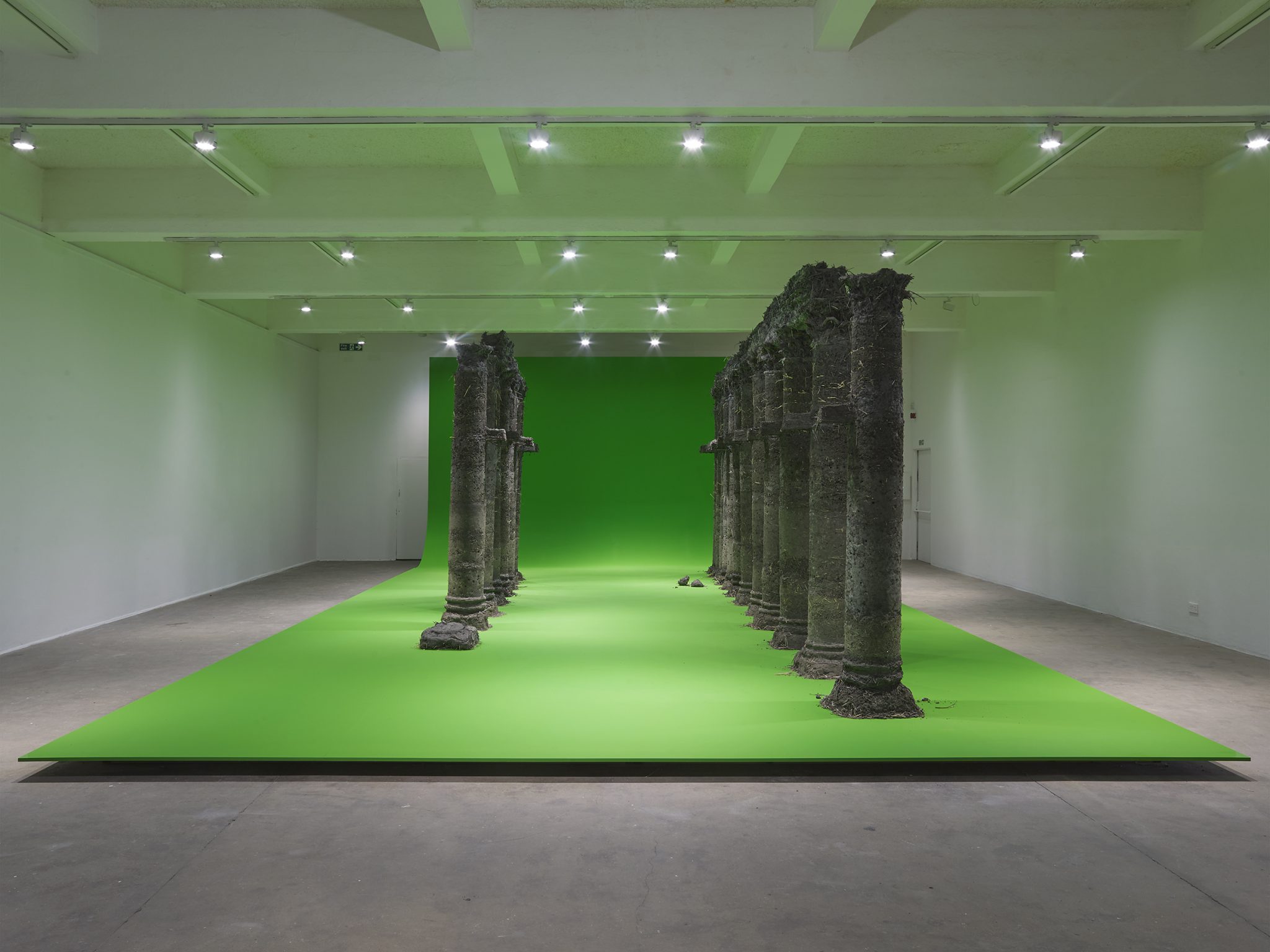At Chisenhale Gallery, London, Akhavan’s curtain call, variations on a folly (2021) takes the form of the colonnade that once approached ancient Palmyra’s Arch of Triumph
How might we visualize the passage of time? In the work of Tehran-born, Montreal-based Abbas Akhavan, it becomes a bizarre kind of film-set, through which we move, back and forth: history as a tangled, non-linear stream of images. His latest installation considers how ancient Palmyra – the once-great merchant city of the Roman empire, situated in present-day Syria – has, in recent years, come to represent a strange kind of disaster tourism. In 2015, Islamic State entered the citadel, razing its temples, theatre and Arch of Triumph dating back to the third century; to cap it off, the militants murdered the site’s eighty-two-year-old head of antiquities Khaled al-Asaad, displaying his corpse among the ruins.

And yet, a year later, Palmyra’s Arch of Triumph rose again. This time, 3D-printed, at two-thirds scale, in Egyptian marble and put on display in London’s Trafalgar Square: the rendering – intended as a compelling statement of civilisation, a document of its mutilation and salvation – was a joint venture between the universities of Oxford and Harvard, and the UAE’s Museum of the Future. Boris Johnson, then mayor of London, used the diminutive replica’s unveiling in the capital to proclaim that ‘Antiquities like this belong to all mankind and it is imperative we all strive to safeguard our common heritage.’ Critics decried it as little more than an aesthetic move that elided the human costs of the conflict.
‘Who inherits the ruins of war?’ Akhavan wonders in the accompanying notes to his Chisenhale Gallery installation. With this contested mission of establishing civilisational hegemony in mind – the uses and abuses of Palmyra – Akhavan’s curtain call, variations on a folly (2021) takes the form of the colonnade that once approached the ancient city’s Arch of Triumph. But the closer you get, the less it makes sense. Akhavan has fashioned the monumental pillars out of cob, a construction material (with an ancient history) composed of subsoil, straw and water – it hits you with a musty, earthy scent, evoking the natural and sepulchral. The effect is to accentuate the winding nature of the past: as you get closer, it seems unclear whether the pillars are emerging from or falling into ruin. It’s an image that is suggestive of the object’s vulnerability, and its impending annihilation – a counterpoint to the architectural overreach that has accompanied Palmyra’s recent resurrections.

This technique of dirt ramming is something that Akhavan seems to have made his own, foregrounding the fleeting, inconclusive nature of monument-making. (We see this in his previous work Variations on Ghost (2017), in which soil and water are packed into the form of the claw of an Assyrian deity, the Lamassu.) Such precarious composition (relative to the fixity of stone) offers a cautionary tale in shallow reconstruction: the vested interests embedded in the ways in which we choose to reproduce heritage. And as the title of his Chisenhale commission implies, Akhavan’s reconstructed colonnade also draws on the visual history of the architectural folly: often more than just mere decoration, follies can be statements of power too – situated in ways that often conjure an effect of visual estrangement.
Akhavan’s objective is to call into question the veracity of images, a play on the folly’s own theatrical, deceptive charms. If this was in doubt, the colonnade is perched on top of a lurid green platform which curves upwards at one end, as if beginning to fold in on itself. By drawing on language associated with the technology of cinema – the green screen and infinity wall – Akhavan gestures towards a ‘portal’ through which this fragmented relic of the ancient world might be transplanted again and again, reemerging through trickery in an endless sequence of scene changes. Green screen promises a forever future for the ancient city. And yet the result is kept resolutely analogue – it hints at the potential for new versions of ancient Palmyra to come, rather than showing any visual effects in their own right. Narrative richness is bonded with technical flatness. Displayed in this way, Akhavan castrates the logic of the green screen: it becomes pure material, no longer a conduit.

Meanwhile, the gallery pulses with an indistinct hum – the artist pipes in a soundtrack of low bass and pink noise, to produce a sonic bleed without observable cause. And there is a beautifully useless coda to the installation, which can only be seen from an impossibly elevated perspective. The phrase ‘CAT’S PAW’ – taken from Jean de La Fontaine’s fable 1679 The Monkey and the Cat (a cautionary tale about being used as a dupe) – is painted on the gallery’s rooftop. Learning of that unseen message – to be read only from the skies above – evokes not only a militarised way of seeing, but also transmits a sense of vertigo to us below.
Abbas Akhavan, curtain call, variations on a folly
Chisenhale Gallery, London
14 August – 17 October
